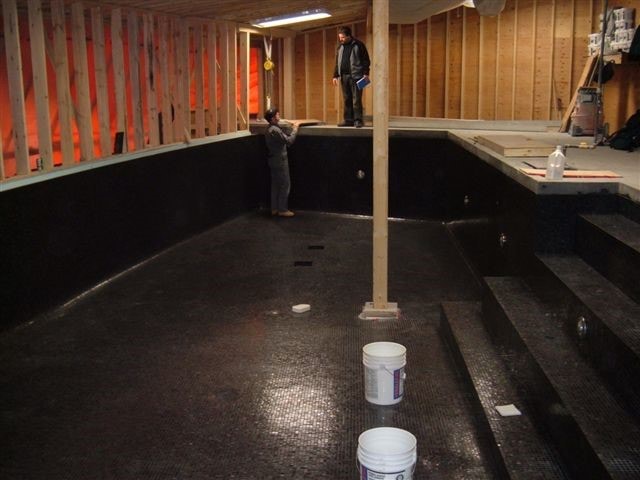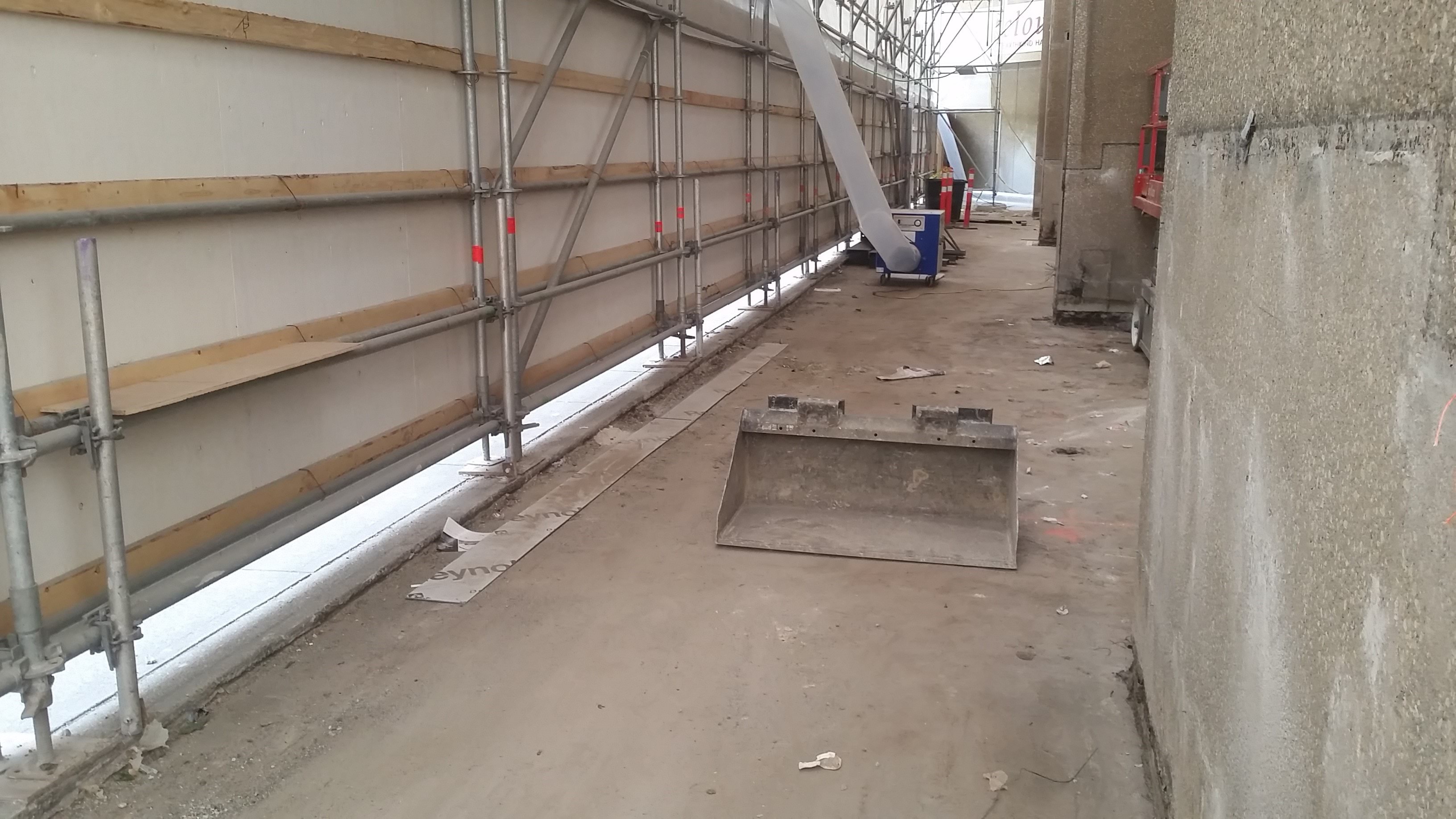Actually, winter is upon us! And I’m not talking about the frigid pale zombies from the Game of Thrones TV series either; I’m talking about winter cold, snow, and all of the challenges that the season brings. Now, if you’re like me, maybe you made plans to “get that reno project done” during your downtime this holiday season. Is it feasible during the winter months, or would it be better to hold off until the springtime? These are good questions.

You should take note that installation products of all types do have safe application-temperature ranges. You can carry out your project if you ensure that your materials, substrate, and ambient air all maintain temperature and humidity levels within these safe ranges.
Temperatures that fall below the allowable range can ruin materials by freezing the water that a product contains, thereby damaging its frost-sensitive ingredients (such as latex polymer, or crystallizing components of an epoxy). Another ill effect of the cold is the possible extending or halting of the curing process. Depending on the conditions where you live, you might already have freezing temperatures overnight, or even freezing temperatures throughout the day. So, what do we do?
First, check all of your materials’ Technical Data Sheets for two things:

Now, assuming that Mother Nature isn’t going to cooperate with you, what can be done? Well, you could just wait for the season to change, but there are other solutions.
Sheltering to protect an exterior area
One effective way to proceed with a project is to implement sheltering of the materials. This can mean anything from tarps, insulated blankets, or even building a temporary wood frame structure. (You might be surprised, but some experienced contractors routinely deploy these temporary measures.) It can be something as simple as some sawhorses with appropriate protection draped over them, and weighted down around the edge. This is a common method where a small patio needs to be protected for DIY or residential contract work.
Sheltering can also mean framed-in walls, or scaffolding, that leaves plenty of room to work, even if the outside temperatures are below freezing through the day and night. This is generally reserved for large jobs where shutdown time is more costly than the special measures that allow work to continue on schedule. However, it is reasonable for someone to build their own framed-in shelter if they so choose.

Of course these areas also need to be heated. If an adjoining space has the capacity to be left open, and heat both areas, then the only thing to consider is the additional cost of energy for heating during the working and protection period. If heating needs to be added to a space to achieve and maintain the desired temperatures, then are two further options:

Considerations around heating exterior areas
Electric heaters may also have the effect of drying the air of the space you are trying to heat, so you will have to make sure that the humidity is monitored and controlled if necessary. Electric options range from $20 units you can get from your neighbourhood home improvement store, all the way up to large capacity units that can make sense to purchase or rent, depending on the user.
Combustion-based heating has its own special considerations. Because of the emissions from burning propane, gas, or diesel, these units need to be planned for more carefully. Emissions are harmful to humans - and products, in fact. These heaters must be exhausted properly to the exterior of the shelter to ensure a safe and proper environment is created. Regardless of the heater type selected for a job, continue to monitor temperature and humidity, and control these variables as needed.
If you ever have any questions about what type of protection is feasible for your project, feel free to call us for ideas. Don’t forget: regardless of the task at hand, you can always get support from our Technical Services team anytime at 1-800-361-9309.
I hope you’re keeping warm and on schedule through the cold wherever you are. Thank you for reading this edition of MAPEI Tech Talk. Take care and I’ll see you at the next one!


Toll-free within Canada:
Technical Services at 1-800-361-9309
Customer Service at 1-800-668-1212
Copyright © 2025 MAPEI Inc. All rights reserved.
2900, avenue Francis-Hughes, Laval (Québec) H7L 3J5
Comments
Load more comments